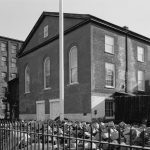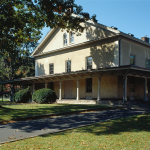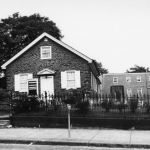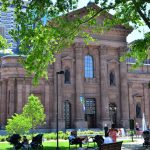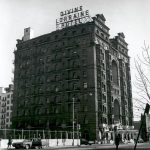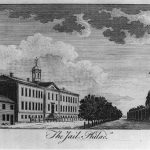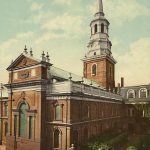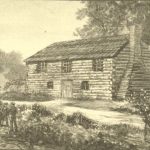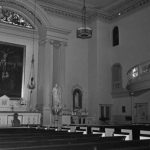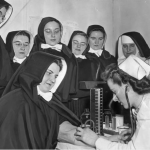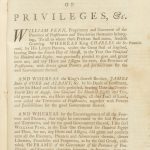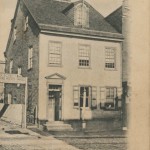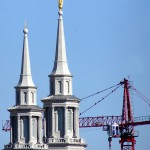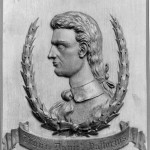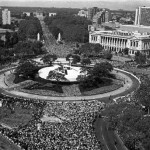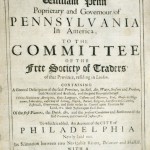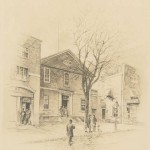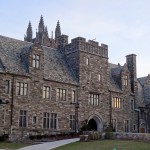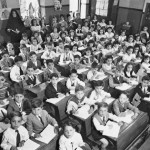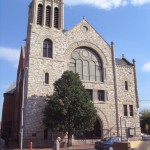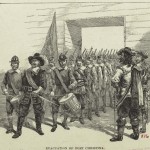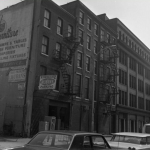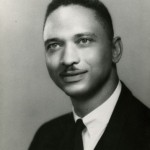Holy Experiment
Essay
What might you do if you found yourself with almost 50,000 square miles of seemingly virgin land in a place you have never seen, far from home? In 1681, when William Penn – entrepreneur, scholar, religious mystic, Enlightenment intellectual – acquired Pennsylvania, he had a ready answer.
Primed with forward-looking ideas about equality and shared community resources from Thomas More’s Utopia, and inspired by the Quaker vision of George Fox and Thomas Loe, Penn was convinced that he could construct a “Holy Experiment” with a well-planned settlement and a rational government. He aimed for a social contract that would bind and respect all residents, based not on coercion but on the principle of “what love can do.”
By the time he was 22, Penn understood coercion. He had been exiled from Oxford University for boycotting Anglican services and for taunting fellow students who acceded to Oxford’s religious practices. Returning home, the young Penn – new to Quakerism – was beaten by his father, Admiral William Penn, who sent his son traveling in hopes that he would mature into a more reasonable adult.
But the admiral did not succeed in dampening his son’s religious fervor. Instead, two stints in prison (as a result of unconventional behaviors stemming from his religious zeal) gave the young man time to read, and to contemplate, consolidate, and write down his Quaker ideas.
A man of his times, Penn saw his identity as a member of the British upper classes. He had servants, and he owned slaves. But Penn’s religious faith led him to want to do good in the world.
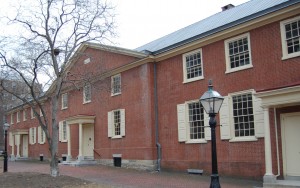
Practicing What He Preached
He wanted to put into practice his conviction that in an unsullied environment, “that of God in each person” would emerge triumphant. In No Cross, No Crown, written in prison, he had concluded that some suffering (the cross) was a necessary part of reward or salvation (the crown). No Cross, No Crown was also a play on words, suggesting that one aspect of an unsullied environment would be a principled refusal to knuckle under to the false authority of the established church or to the king.
But Quakers were accustomed to persecution for eschewing “worldly” conventions, and Penn had no illusions that it would be easy to create that perfect environment. Hence, in devising his New World utopia, Penn spent many months recruiting men of conscience to populate his new province. He also drafted a “Frame of Government” to provide the scaffolding for community, and secured approval from other Quakers who read the document.
A businessman as well as a man of deep religious faith, Penn also wanted a return on his investment. He dreamed of a “great towne” – a bustling commercial center that would command a place of respect in the Atlantic World. On the other hand, however, Penn wanted a bucolic “greene countrie towne” befitting an English country gentleman. So he hired surveyor Thomas Holme to lay out a grid to accomplish these contradictory goals. Parks would serve for neighborhood gathering places, and a central marketplace would help to cement a community and an economy based upon morality, integrity, and mutual compassion among citizens.
The “Frame of Government,” based upon England’s Magna Carta, also affirmed Enlightenment ideas of equal justice for all who would consent to live within the laws. From this premise flowed the idea of toleration and fair treatment for people of diverse religions and cultures – a principle that extended to offering contractual relationships for acquiring land from the local Indians.
A Worry About Catholic Allegiance
But in these aspects also the wily businessman merged principle with expedience. At first he was leery that Catholics’ allegiance to the pope might compromise their loyalty to local law. But he eventually concluded that religious persecution interfered with the smooth operation of commerce and property, and therefore Catholic residents should be allowed to pursue their religion and community life, as long as they abided by the civil laws.
Penn’s colony early welcomed Jews, as well as Anglicans, Mennonites, and the Lutherans who established “old Swede’s” Church by the end of the seventeenth century. That atmosphere of religious openness also paved the way for the world’s first African American Christian denomination – the African Methodist Episcopal Church – and for myriad religious groups who reflected the city’s continuing diversity.
Through three centuries of growth and change, Philadelphia has retained much of Penn’s vision, and has returned repeatedly to his ideas of community and tolerance. Four of the five community parks remain in Center City as important markers of neighborhood unity. In the middle of the nineteenth century, the city government reaffirmed Penn’s vision by purchasing country estates to create Fairmount Park – a resource used and valued by various residents.
Philadelphia is still known as a “City of Neighborhoods,” but the tensions that were evident in its founding continue. The public city parks have often been sites of contention over who has the “rights” to define their use. And just as Penn was suspicious of Catholics, anxieties among diverse religions – Protestants, Catholics, Jews, and more recently Muslims – have peppered the city’s political, geographic, and economic life, even as some residents continue to celebrate the traditions of diversity and tolerance.
In 2010, after nearly a decade of negotiation among these diverse people, Philadelphians unveiled a memorial to the city’s years as the nation’s capital (1790-1800). This historic site, the President’s House, takes a hard and honest look at the place of slavery in the development of the nation’s early history. Nearby, a new National Museum of American Jewish History also opened its doors. These are but a few of countless examples of the enduring influence of the “Holy Experiment” that invite Philadelphia residents to turn “diversity” into “community.
«»
William Penn worked to build his province on two levels—with practical plans for land use and governance, and with prayer for Divine Guidance. His 1684 prayer for his “great towne” captures much of his mood:
“And Thou Philadelphia the virgin settlement of this province named before thou wert born, what care, what service, what travail have there been to bring thee forth and preserve thee from such as would abuse and defile thee. O that thou mayest be kept from the evil that would overwhelm thee, that faithful to the God of thy mercies in the life of righteousness, thou mayest be preserved to the end. My soul prays to God for thee that thou mayest stand in the day of trial, that thy children may be blest of the Lord and thy people saved by His power.”
Emma Lapsansky-Werner is Professor of History Emeritus at Haverford College, where she was Curator of the Quaker Collection. (Author information current at time of publication.)
This essay is published in partnership with the Historical Society of Pennsylvania, with support from the Pennsylvania Humanities Council.
